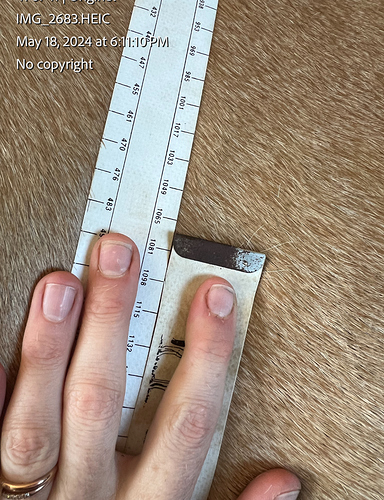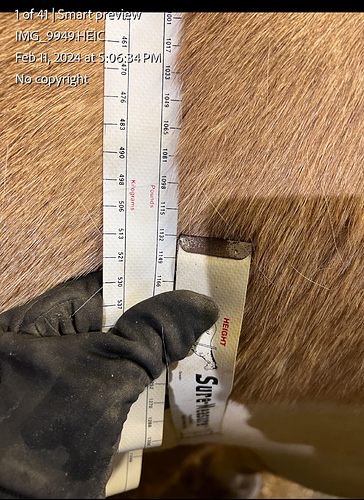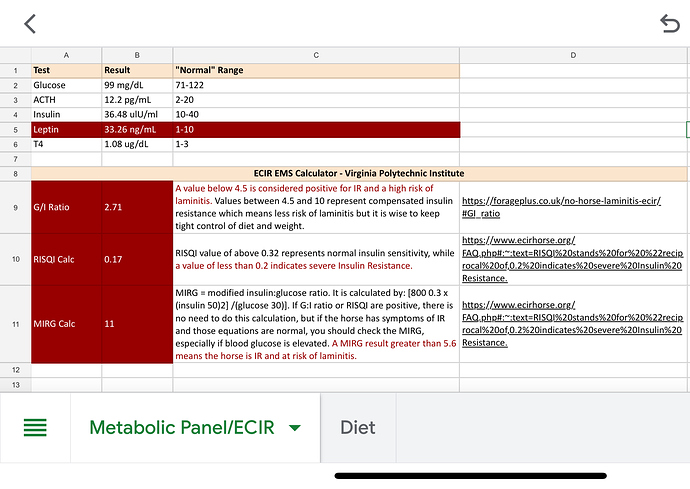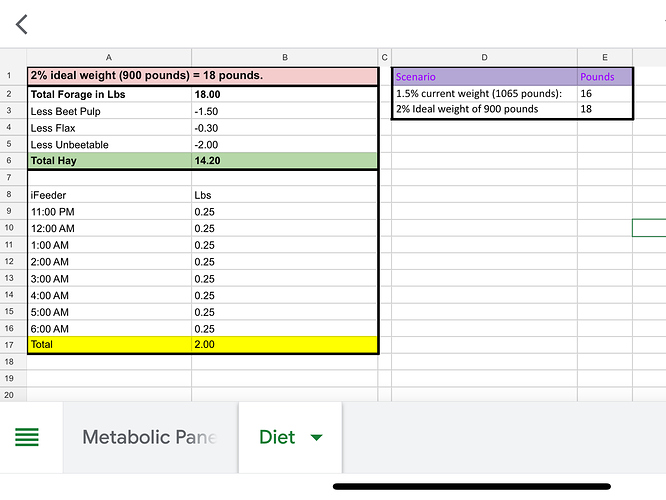This may feel like a pile on, but that is not the intention.
Are you feeding him for what he currently weighs or for what he should weigh?
When I look at the most recent picture of him and guess his height/weight, and add up the amount of forage (~19lbs), I personally would say that for my guess on height/weight you could very easily drop a few pounds of forage and still be well within 1.5% forage:body weight and would probably have a ton more success getting him to a decent weight.
It’s the same with thin horses - we feed them for the weight we want them to be, not the weight they currently carry, otherwise we will not swing the pendulum in the required direction.
Doubling or tripling his net/s can help slow them down even more so their rations last a little longer. FWIW, because I always worry about gut health, I’d ditch the pellets completely because they are eaten quickly and then the meal is done whereas replacing a little of them (not all*** - because overall reduction) with dry hay.
*** EDITING to clarify - I mean ditch ALL the pellets and add in only some of the weight of the former pellet portion in dry hay (dry hay weight, obviously you’re going to still want to soak it!)
Another thought to slow down consumption of part of the ration would be a hay ball.
Hoping for a full recovery! Laminitis sucks it so bad.






